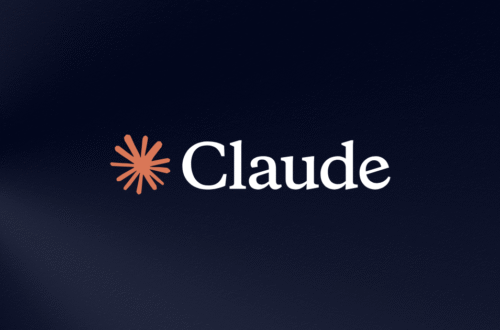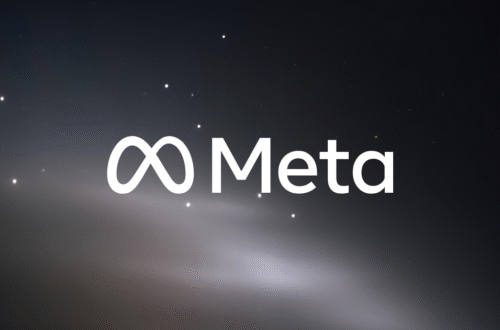Just when you thought the AI hype-train might be slowing down for a pit stop, OpenAI & Google decided to dump a tanker of rocket fuel on the tracks. In the span of about 24 hours, both companies unveiled their vision for the future of AI: the “omni-model”. This isn’t just another incremental update or a slightly smarter chatbot. This is a full-blown paradigm shift, a race to create a true digital companion that can see, hear, & speak with you in real time. The two contenders in the ring are OpenAI’s very real, very available GPT-4o, and Google’s very slick, very-much-a-demo Project Astra. Let’s break down this clash of the titans, cut through the marketing fluff, & figure out what it all means for us.
So, What the Heck is an “Omni-Model”?
For the last couple of years, we’ve been hearing about “multimodal” AI. That means an AI that can handle different types of info – text, pics, audio, you name it. But it was clunky. You’d talk to it, your speech would get converted to text by one model, sent to another model for processing, which then sent text to a *third* model to generate a robotic voice. The lag was noticeable & the experience felt stitched together, because it was.
An omni-model, or what OpenAI is calling it with their new “o” branding, is different. The whole point is to have one single, unified neural network that natively understands text, vision, & audio all at once. By trashing the slow, multi-step process, you get rid of the latency. The goal isn’t a tool; it’s a partner. We’re talking about the fluid, conversational AI from the movie Her, and it’s arriving way faster than anyone expected.
Contender #1: OpenAI’s GPT-4o (“o” for Omni)
OpenAI, never one to be subtle, dropped their GPT-4o announcement during a live-streamed event that felt less like a product launch & more like a magic show. The demos were fast, impressive, and most importantly, they were live. No pre-recorded trickery here.
The Good Stuff
The biggest flex from GPT-4o is its speed. The audio latency, which is the awkward pause between you finishing a sentence and the AI starting to talk, is ridiculously low. OpenAI claims it can respond in as little as 232 milliseconds, with an average of 320ms. That’s human-level reaction time. It can hear emotion, interruptions, & even background noise, and react accordingly. During the demo, it sang, told jokes with different intonations, and translated languages in real time between two speakers.
Using a phone’s camera, it could “see” the world, solving a math equation written on a piece of paper, commenting on a person’s outfit, and describing what it saw in the room. This isn’t just a chatbot anymore; it’s a context-aware entity.
The Nitty Gritty Stats
- Performance: It matches GPT-4 Turbo’s intelligence on text & code benchmarks, but it’s way faster.
- Cost: This is a game-changer for developers. The API is 50% cheaper than GPT-4 Turbo, priced at $5 per million input tokens & $15 per million output tokens. This makes building powerful AI apps much more affordable.
- Availability: Here’s the killer blow. It’s rolling out right now. Free ChatGPT users get access (with limits), Plus users get higher caps, and the API is ready to go. OpenAI isn’t just showing off a concept; they’re shipping a product.
Contender #2: Google’s Project Astra
Not to be outdone, Google took the stage at its I/O conference the very next day to reveal its own take on the omni-model: Project Astra. The name itself, an acronym for Advanced Seeing and Talking Responsive Agent, sounds like something out of a sci-fi flick, and the demo video was certainly cinematic.
The Vision
Google’s pitch is for a “universal AI agent”. The demo video was a continuous, single-take shot of a user interacting with Astra through their phone and a prototype of smart glasses. The AI assistant identified objects, remembered where the user left their glasses, interpreted code on a screen, and even got creative by making up a band name for a pair of crayons and a speaker. It was fluid, fast, and futuristic.
The core concept is an agent that can process a continuous stream of visual & auditory info, build a contextual memory of what it’s seen, and converse about it instantly. It’s an incredibly powerful vision for the future of ambient computing.
The Big “But…”
But… and it’s a big but… it was a pre-recorded video. While Google insists the footage was captured in real time, it wasn’t a live demo. We couldn’t see the raw, unedited interaction. And unlike GPT-4o, you can’t use Project Astra. It’s a “project.” Google says some of its capabilities will be integrated into products like the Gemini app “later this year.” For now, Astra is a fantastic trailer for a movie that isn’t out yet.
Head-to-Head: The Real Showdown
So, who’s ahead in this race? It depends on how you keep score.
Availability & Access: OpenAI wins this, and it’s not even close. GPT-4o is in the hands of users & developers today. Project Astra is a promise. In the fast-moving world of AI, shipping is everything.
The Demo: OpenAI’s live demo felt more authentic & gutsy. It had a few minor hiccups, which weirdly made it more believable. Google’s polished video was visually stunning but felt more like a carefully crafted marketing asset. It’s easy to look perfect when you control the edit.
The Vision: Both companies share the same endgame: a real-time, conversational AI companion. Google’s integration with smart glasses hints at a more ambitious hardware play, which makes sense given their control over Android and Pixel devices. They have the ecosystem to make an “always-on” AI a reality, which is both amazing & a little terrifying.
Why This Omni-Model Stuff Actually Matters
This is way more than just a tech pissing contest. This shift to omni-models unlocks capabilities that were pure science fiction a few years ago.
- True Accessibility: Imagine an AI that can provide a rich, real-time audio description of the world for someone who is visually impaired. Not just “there is a person,” but “your friend Sarah is walking up, and she’s smiling.”
- Next-Gen Education: A tutor that can literally see your homework, notice you’re struggling with a specific formula, and talk you through it step-by-step with patience that never runs out.
- On-the-Job Assistance: A mechanic could wear smart glasses and get expert guidance from an AI that sees the engine and walks them through a complex repair.
The Ethical Minefield
Of course, this tech is a double-edged sword. The potential for misuse is massive. The “Sky” voice from GPT-4o, which sounded eerily like Scarlett Johansson’s AI character in *Her*, kicked up a firestorm. OpenAI pulled the voice after Johansson herself called them out, but it highlighted a huge issue: deception. When an AI can sound this human, complete with sighs, laughter, and emotional inflections, the lines blur. OpenAI’s claim that the voice wasn’t an imitation of Johansson was met with heavy skepticism, and for good reason. It served as a stark warning about the need for transparency.
And then there’s privacy. An AI that is always listening and always watching? That’s the ultimate surveillance tool. We need ironclad best practices for data handling, user consent, and clear indicators for when an AI is active. The potential for a privacy nightmare is off the charts.
The Verdict (For Now)
In the Omni-Model Race, OpenAI is currently in the lead. They crossed the finish line first by shipping a tangible, usable product that largely delivers on its promises. GPT-4o is real, it’s fast, and it’s already changing the game for developers with its lower cost.
Project Astra represents Google’s powerful, if delayed, counterpunch. Google’s deep integration into the Android ecosystem and their hardware ambitions mean they are uniquely positioned to deploy this tech at a scale OpenAI can only dream of. But a vision doesn’t win a race. Execution does.
This isn’t the end of the story. It’s the explosive start of a new chapter in AI development. The battle is no longer about who has the smartest model, but who can create the most seamless, intuitive, and genuinely helpful AI companion. Buckle up.



